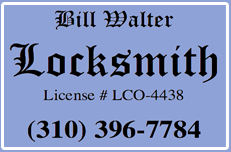What Makes a Safe Safe - billwalterlocksmith.com
- Home
- What Makes a Safe Safe
bill-admin
On March 28, 2023

It was in the late 1800s that cast iron began to be used to create thick walled metal boxes. What had originally been known as a strong box had been transformed into a safe. Currently, safes are rated to protect against two basic types of hazards; fire and theft. Safes vary in style, size and shape depending on how they’re going to be used.
DROP SAFES are safes like a banks night depository where employees can make “deposits” as necessary, but the combination is required to remove items.
WALL SAFES are built into walls and usually hidden behind photos.
FLOOR SAFES are generally buried in the ground below the surface of the floor. They can be covered over by a chair or other furniture
GUN SAFES are designed to hold pistols and rifles.
HOME SECURITY SAFES are the type pictured in this newsletter. They are used to safely store valuables and important documents. Lighter weight home security safes are generally bolted to the floor from the inside so the potential thief can’t just make off with the entire safe. They should be U.L. Fire Rated and/or U.L. Burglary Rated depending on your needs.
The Fire Rating is usually CLASS 350 or CLASS 125 followed by a dash and the number of hours ½, 1, 2, 3, or 4. Class 350 is for valuable papers which start to char at over 400°F. Class 125 is for protecting magnetic media such as video tapes, computer back-up drives and floppy disks which can’t tolerate the temperatures that paper can.

Burglary resistance is rated as TL-15, TL-30, TRTL-30, TRTL-60 and TXTL-60. The number indicates the net number of minutes it takes a skilled person with portable tools such as grinders, drills etc. to gain entry to the safe. The TR rating includes cutting torches while the TX rating includes high explosives like nitroglycerin.

